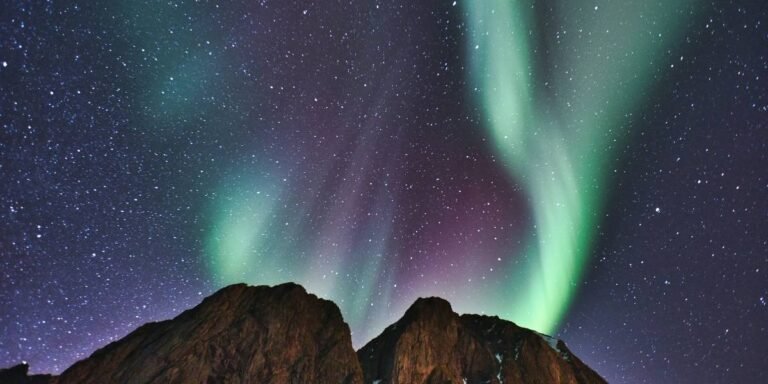As temperatures continue to rise during the warmer months, travelers are increasingly turning toward cooler climates for their vacations. The trend of coolcations—vacations in places with milder weather—is becoming a more noticeable shift in how people approach travel, particularly in the summer. Rather than heading to the usual hot destinations, people are seeking out places where temperatures are more temperate and comfortable, offering a different type of travel experience.
This move towards coolcations represents a broader change in how individuals think about their leisure time. As the global climate changes, and as travelers prioritize comfort and personal preference, destinations that offer cooler weather and unique experiences are slowly gaining popularity. In response, travel marketing is adapting to these preferences, focusing more on how destinations provide relief from the heat and offer environments that allow travelers to enjoy their time away without the discomfort of extreme temperatures.
Read also: Urban Mobility Innovations in Portland
What Defines a Coolcation?
A coolcation typically refers to a vacation where the traveler seeks out cooler destinations as an alternative to traditional summer hotspots. While many people still gravitate towards warmer places for their vacations, the appeal of cooler climates is gaining traction. These places are often located at higher altitudes, closer to the poles, or in coastal areas where the temperatures remain moderate throughout the year.
The key difference between coolcations and traditional vacations lies in the temperature and climate. While many people might opt for tropical beaches or bustling cities known for their warm weather, those choosing coolcations are looking for places where temperatures are comfortable and often cooler than the norm for that time of year. The focus is not just on the destination’s popularity but more on the quality of the climate and the ability to explore without the stress of extreme heat.
Why Are More Travelers Opting for Coolcations?
Travelers are increasingly drawn to coolcations for a variety of reasons, many of which reflect changing preferences around travel. While the desire for new and unique experiences has always been a part of tourism, cooler climates now offer an appealing alternative to the familiar beach or city trip.
One of the primary factors contributing to the rise of coolcations is the discomfort that comes with extreme heat. With rising global temperatures, many travelers are becoming more mindful of how heat affects their well-being. In some regions, the summer months bring with them high humidity and heat, making outdoor exploration less enjoyable. For some, this shift to cooler climates provides a more manageable and pleasant way to engage with the destination.
The increase in environmental awareness has also played a role in the appeal of coolcations. Many travelers are now looking for ways to reduce their exposure to extreme weather and opt for destinations that are not only cooler but also perhaps less affected by intense seasonal shifts. Places that offer a balance between comfortable weather and the opportunity for engaging, authentic experiences are beginning to draw attention.
How Are Travel Marketers Responding to the Coolcation Trend?
As coolcations gain ground, marketers are adjusting their strategies to cater to the preferences of travelers seeking moderate temperatures. Traditional travel marketing focused heavily on destinations associated with sunny beaches or tropical climates. However, there has been a gradual pivot toward promoting destinations that offer cooler and more temperate conditions, especially during peak summer months.
Some of the marketing shift involves emphasizing the health and comfort benefits of cooler climates. Rather than selling vacations based solely on luxurious resorts or famous attractions, travel campaigns now tend to highlight how specific destinations offer refreshing environments for relaxation, exploration, or even outdoor activities, all without the oppressive heat.
There is also an increasing focus on authenticity in marketing campaigns. Instead of simply selling a location based on its temperatures, marketers are highlighting local cultures, eco-friendly initiatives, and opportunities for travelers to immerse themselves in less commercialized environments. By focusing on the character of a destination—its people, natural beauty, and unique offerings—travel brands can connect with a traveler’s desire for a more meaningful journey.
What Role Does Technology Play in Finding Coolcations?
In today’s digital world, technology has made it easier for travelers to find cooler, less traditional destinations that suit their preferences. Websites, travel apps, and social media platforms all serve as valuable tools in discovering places that might not be on the typical tourist radar.
For example, social media platforms have allowed travelers to share their experiences in destinations with moderate weather, making these coolcation spots more accessible to those who might not have otherwise considered them. Visual platforms like Instagram and Pinterest often serve as inspiration for travelers searching for serene, comfortable locations that offer both beauty and relief from the heat.
The rise of online travel forums and review sites has also made it easier for people to learn about destinations that are ideal for coolcations. With the ability to read about personal experiences from others, travelers can feel more confident in making decisions about where to go for a cool and comfortable experience.
Are Coolcations More Affordable Than Traditional Vacations?
Whether coolcations are more affordable than traditional vacations depends largely on the destination and the traveler’s preferences. While cooler regions are not inherently less expensive, some locations that offer cooler climates tend to be less frequented by mass tourism, which may translate to lower prices for accommodations and activities. In contrast to crowded tourist destinations, lesser-known coolcation spots might offer a more budget-friendly option for those who prefer to avoid busy, expensive areas.
Additionally, because these cooler destinations are not necessarily tied to peak summer travel seasons, travelers may find that the overall cost of the trip—whether for flights, accommodations, or dining—can be lower than more popular, high-demand destinations.
What Kinds of Experiences Are Associated with Coolcations?
Coolcations are not just about escaping heat; they offer a chance to explore different cultures, landscapes, and environments. While travelers might associate hot destinations with sunbathing on beaches, cooler locales provide opportunities for outdoor activities like hiking, cycling, or exploring scenic mountain vistas without the physical strain of excessive heat.
Cooler destinations are also often more conducive to sightseeing and outdoor exploration in general. Travelers can wander through historical towns, hike along nature trails, or visit national parks without the discomfort of sweltering temperatures. Whether it’s the cooler nights of the mountains or the refreshing breeze of coastal regions, coolcations often provide a more pleasant environment for travelers looking to engage in nature-based activities.
Moreover, many cooler destinations boast sustainable tourism practices, with a focus on preserving local ecosystems and encouraging low-impact travel. This focus can appeal to travelers who prioritize ethical tourism or those who wish to explore places that align with their values of conservation and responsible travel.
Read also: Digital Detox: How to Travel Without Your Smartphone and Still Stay Connected
How Are Coolcations Changing the Future of Travel?
As more people seek out cooler destinations for their vacations, the travel industry will likely continue to evolve. The shift toward cooler destinations reflects broader shifts in travel preferences—away from the traditional, mass-tourism experiences to more personalized and eco-conscious choices. With a growing interest in destinations that offer both comfort and sustainability, the idea of a coolcation might become a more common consideration when planning travel.
The future of travel could see an increased emphasis on regions that balance moderate temperatures with opportunities for meaningful cultural exchange, outdoor adventure, and environmental responsibility. As global weather patterns continue to evolve, it is likely that coolcations will continue to shape the way travelers seek out new experiences in the years ahead.
Ultimately, the rise of coolcations highlights a broader movement toward more thoughtful, sustainable, and enjoyable travel, where the environment, comfort, and authentic experiences are given equal weight in the decision-making process.









